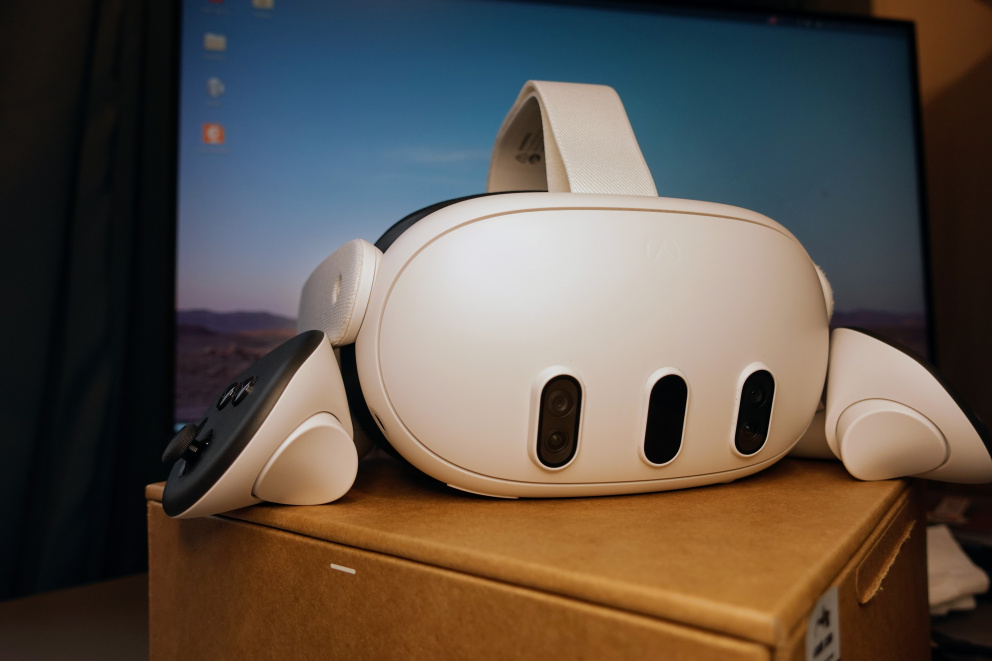Meta quest 3
Future of
Virtual, Augmented Reality Integration
Meta (formerly Facebook) is taking the next step in
innovative technology through its release of the Meta Quest 3, a virtual
reality headset that brings the metaverse one step further into mainstream
users. Building on the strength of Quest 2, not only as an entry product into
the virtual world but also fully embracing cutting-edge features like full-body
tracking and hand interaction as well as AI-generated avatars, Quest 3 forms a
focal point for Meta continued investment in the metaverse vision and the
future of human interaction.
Meta
Quest 3: Affordable VR for the Masses
Meta is introducing the Quest 3 headset in the virtual
reality market to make this type of technology even more accessible by lowering
entry fees and making it with major advancements in usability and immersion.
Its predecessor, Quest 2, was also supposed to be standalone, which meant not
being tied up to a PC or any sort of external hardware to make its users more
mobile.
1.
Increased Immersion through Full-Body Tracking:
- Among all the exciting features that the Meta
Quest 3 will be sporting, full-body tracking stands out. This would promise
to let the headset track every part of the body; thus, building avatars in
virtual environments much more realistically and lifelike. Can you wait for
that natural interaction with people, especially while gaming, social media,
even professional meetings?
2. Hand
Interactions and Haptic Feedback:
- Hand interaction technology is also improved to
allow interaction with virtual objects using bare hands and without holding a
controller. This fingertip-precise hand tracking would, potentially, allow
things like grabbing, throwing, or manipulating objects within a virtual
environment. The Quest 3 promises haptic feedback with training in touch
sensations too.
3.
AI-Generated Avatars:
- Another feature that is of extreme importance and
will be added to this platform is the use of AI-generated avatars.
Avatars can represent users and reflect real-world movements and expressions
even more realistically. It will make communication, socialization, and other
activities in the metaverse more realistic, exciting, and interesting.
The use of AI can generate customized avatars with various options for
advancing expressions in virtual worlds.
A richer
social and gaming experience
Meta metaverse focus is not simply on the tech; it is
helping people make real experiences. Quest 3 will be on hand to deliver more
social interactions where people can meet, interact, and collaborate in virtual
worlds. One would go for such activities as meeting friends in virtual worlds,
attending virtual concerts, and so much more video gaming. All this will be
done in seamless, immersive engagements.
The Meta Quest 3 under gaming is expected to be
driven by AAA game titles and even more engaging, interactive,
socialized games. It also utilizes AI, which would eventually create
environments and other non-playable characters that could be far more dynamic
and responsive in an almost endless way for a much more immersive and
intelligent gameplay.
Meta
Smart Glasses Cooperation: Meta AR Ambitions with Ray-Ban
Besides VR, Meta spends much through its collaboration with
Ray-Ban in augmented reality (AR). Already, the Ray-Ban Stories smart glasses
are already featuring simple capabilities such as photo and video capture,
while by year 2025, Meta will have its complex AR glasses ready for roll out.
The future of the AR people can look forward to is captured in the following
section.
1. Heavy
AR Interactions:
The future smart glasses will work together with rich AR
functionalities by showing virtual overlays on the real surroundings to a user
who can then receive virtual information regarding navigation directions,
notifications and messages right in front of their eyes instead of having to
constantly look away from a phone to read that information.
2. Live
Streaming in Real Time:
The most exciting feature here is real-time live
streaming. That means that the users can report their experiences directly
from their smart glasses, no matter whether they attend an event, travel, or
get involved in a new hobby, giving their audience access to a first person
perspective.
3.
Increased AR for Everyday Use:
Meta AR glasses will be a daily product, like smart phones
in 2025. Owners will use digital assistants to make or receive voice calls,
conduct video meetings, and work with virtual screens on top of other objects.
Such advancements will not only help people to become more productive but will
also push AR from self-indulgent fringes into widespread adoption as a
versatile, day-to-day technology.
Conclusion:
The New Wave of Immersive Technologies
Meta is fully investing in the vision to make virtual and
augmented reality indelibly part of people everyday lives by launching the Meta
Quest 3 and cooperating with Ray-Ban smart glasses. The two will
redefine how people communicate, play, and work with the digital world by 2025
to make both technologies irreversible tools for entertainment and
productivity.
This ambition for Meta to dominate the VR and AR space
shares a belief with the company that some future awaits with a seamless merge
of the digital world and the physical one forming what is to be called the metaverse
and eventually part and parcel of human life.









